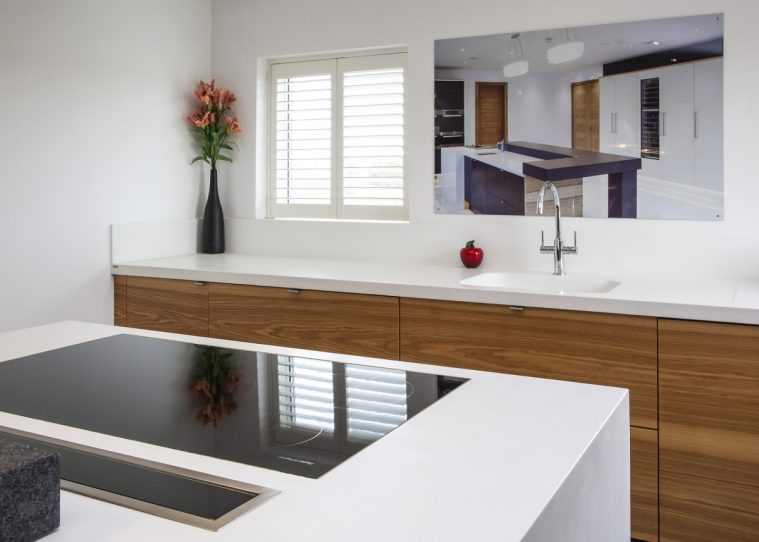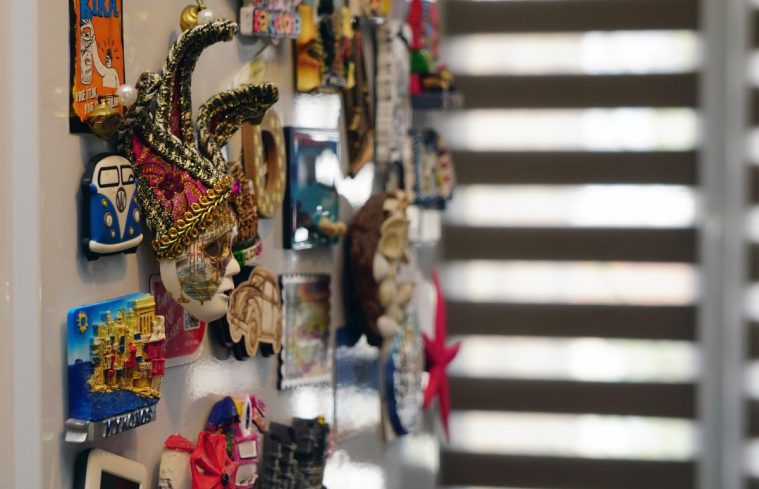15 ways to keep children safe in your kitchen
It’s Child Safety Week this week, so we’re looking at design considerations and practical steps you can take to keep children safe in your kitchen.
If you have children yourself, or children frequently visit your home, then “child-proofing” is essential.
But even if you don’t often have young visitors, it can still be useful to design your kitchen in a child safe way, both for the odd time a toddler does come round and in case you eventually want to sell your home to a young family.
Here are just a few of the ways in which you can make your kitchen more child safe:
1. Kettles
The safest kettles are those with short or curly leads, which are easier to keep out of children’s reach. Never allow a kettle flex to hang down over the countertop.
Safer than a kettle is a boiling water tap. The Quooker tap, for example, provides 100°C water, allowing you to get rid of your kettle. The Quooker boiling water tap is childproof, so little fingers won’t be able to use it at all.
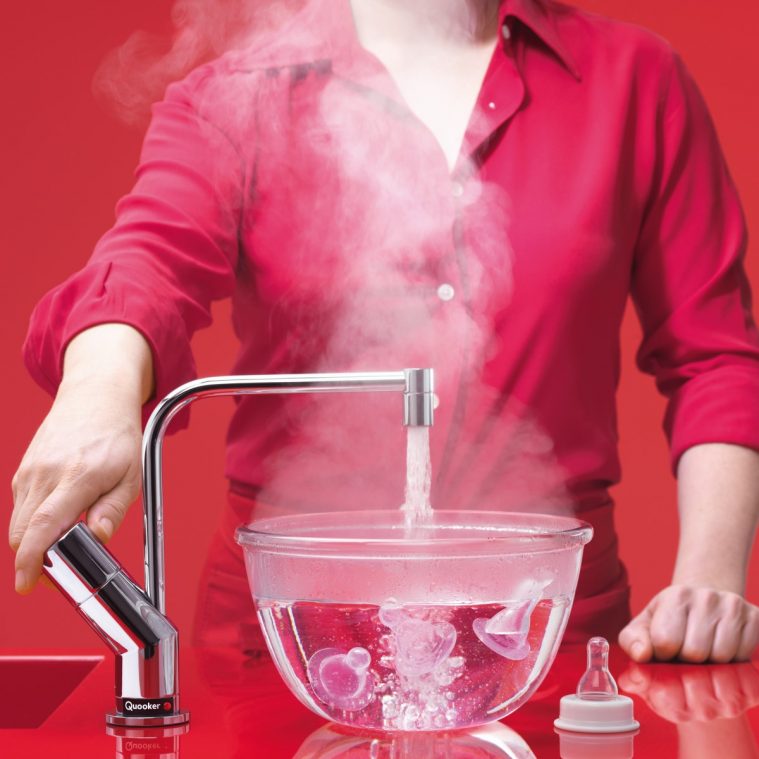
2. Hot drinks
Hot drinks such as tea or coffee can still burn a child even 15 minutes after they were made. Always keep your cup out of reach of children, never try to drink a hot drink while holding your child and avoid passing hot drinks over their heads.

3. Hobs
Even after a hob has been turned off it can still retain a lot of residual heat, so children should be kept away from it. The Miele and Siemens ranges of induction hobs, for example, have a residual heat indicator to remind you that they are still hot from cooking. They can also be locked to prevent a child from turning them on.
4. Saucepans
Use the rear cooking zones of your hob when you’ve only got one or two pans on. Always turn saucepan handles to the back or centre of your hob so they aren’t sticking out over the front of the cooker where little hands could grab at them.
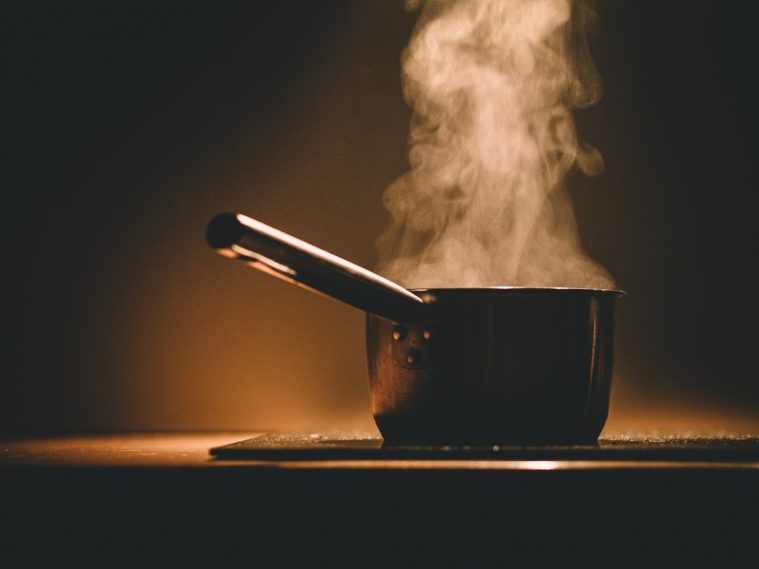
5. Oven doors
Depending on the type of oven you have, the door could get very hot when it’s on, so keep children away from it and teach them about the danger. If your oven is at floor level be extra vigilant because, while most ovens are difficult for children to open, they aren’t impossible.
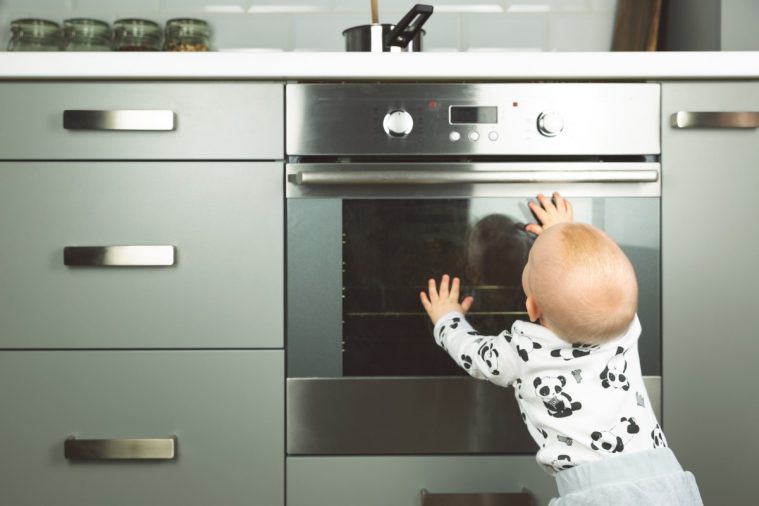
Our Miele ovens have a “touch-cool front” which keeps the front of the oven, along with the controls, handles and neighbouring cupboards, relatively cool, to prevent burning. In addition, the controls of Miele and Siemens ovens are lockable, to prevent children turning them on.

6. Hygienic worksurfaces
When designing your kitchen the most hygienic types of countertop are of polished and sealed stone or composite material, such as quartz or Corian. These prevent any germs from seeping into the worktop and are very easy to wipe clean.
7. Knives and other sharp implements
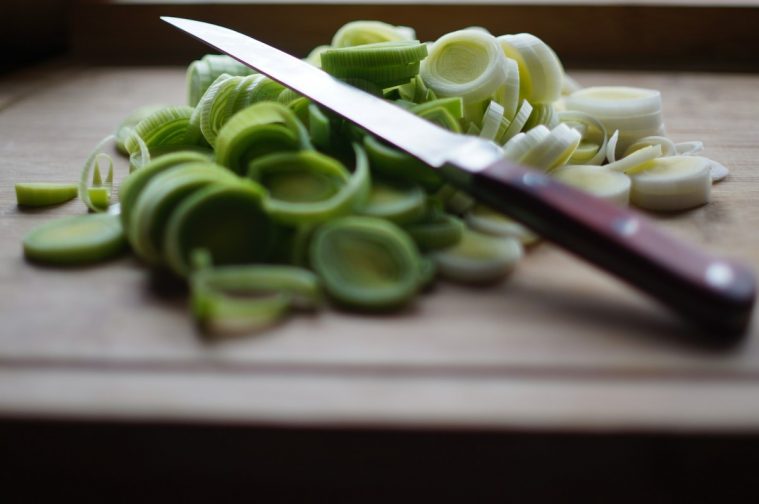
As soon as your child gets close to reaching the knife drawer you need to take action. Either fit a childproof latch to the door or use a knife block or rack to store your knives and scissors at the back of the worktop.
Alternatively, kitchen islands can be designed with a knife block in the centre, so they’re out of reach of youngsters yet very handy for when you’re preparing food.
8. The right height
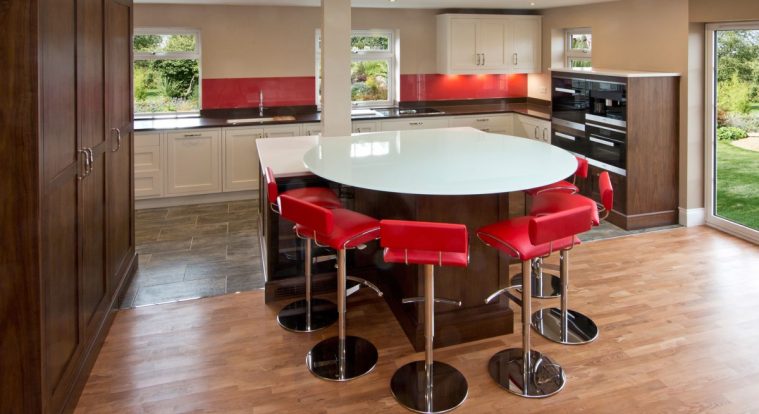
While high stools look very stylish in contemporary kitchens, they’re not a great choice for young children to sit on. So, make sure there’s a lower seating area for them to use, for eating and cooking at.
You could also consider having a lower section of the kitchen worktop for your child to cook at or invest in an adjustable height worksurface. This can be gradually increased in height as your child grows.

If you find you’re frequently using a step stool so your child can reach the countertop to help out, then consider purchasing an enclosed one to prevent them falling backwards.
9. Fridge magnets
If you have a child under three in the house, remove any small magnets from the front of your fridge. They may be up high, but if they get knocked off they could easily be swallowed or choked on.
10. Windows
As with all the windows in your house, the kitchen windows should be kept locked (with the key somewhere you can find it quickly) or open on secure catches. Even a fall from a ground floor window can be dangerous if it’s onto a hard surface.
11. Keep poisons locked away
Young children love putting things in their mouths and dishwasher tablets, cleaning fluids, medicines and detergent capsules are no exception. Consider storing anything poisonous in a high cupboard and, if you need to store them in low cupboards, fix childproof catches.
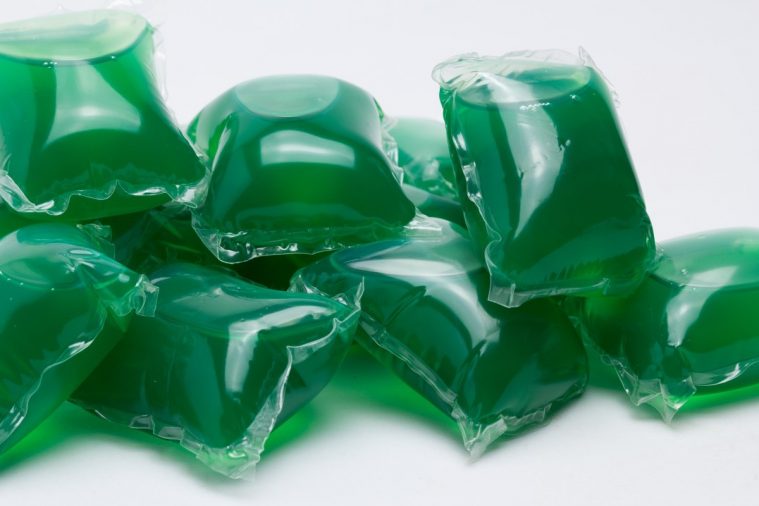
When designing a new kitchen, consider installing a couple of higher cabinets which would give you the option of storing poisons well out of reach.
Always put the lids back on bottles securely and try to open child-proof caps when your child isn’t watching – they copy and learn very quickly!
Never store poisons in containers which look like they might contain food, your child may not realise that it’s not food before they take a taste.
12. Rubbish bins
If you think about the type of hazards you regularly throw away in your kitchen bin then you’ll understand why it’s important to keep your child out of it!
Bins and recycling containers which are concealed in cupboards are useful here, as the cupboards can be fitted with a childproof lock to keep them shut. They’ll also give your kitchen a less cluttered, contemporary look.
Alternatively, you can purchase lockable bins which are child resistant.
13. Safety equipment
Keep a fire extinguisher and a fire blanket somewhere easily accessible in your kitchen along with a first aid kit. Make sure that you have a basic understanding of how to deal with common incidents such as falls, burns and scalds.

Fit a smoke alarm and test it regularly. Consider installing a heat detector in the kitchen. If you have a gas cooker or another fuel-burning appliance then have an audible carbon monoxide alarm fitted.
14. Their own space
Giving your child their own pretend kitchen can be a useful learning tool. Encourage them to teach their toys to use the play kitchen safely.
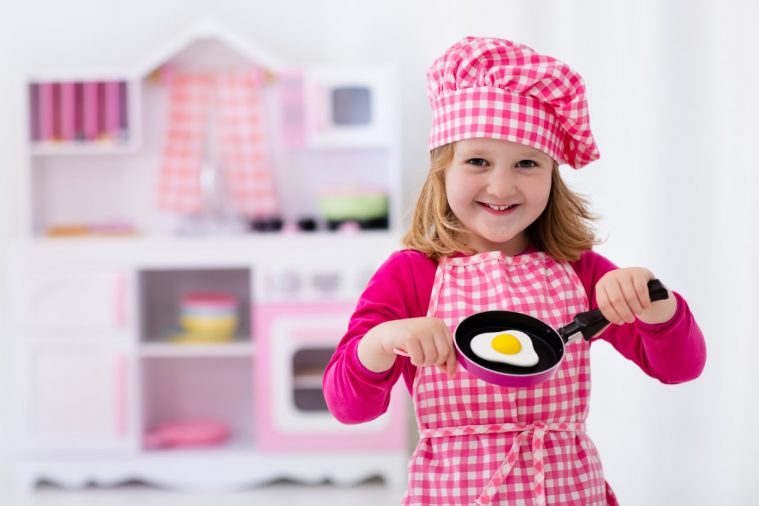
It can also help to give them their own low cupboard in the real kitchen, filled with pretend food and kitchen equipment. This should give them less reason to go into the other cupboards and stop them feeling excluded from kitchen activities.
15. Observation and communication
Never leave young children alone in the kitchen, especially when the cooker is in use. And don’t let yourself become distracted by your phone, TV or guests. Children can get up to mischief in seconds.
One of the best weapons in your armoury is to talk to your child about kitchen safety and help them understand the risks (to the extent that it is appropriate for their age).
“Parent packs” can be purchased from the Child Accident Prevention Trust which include illustrated safety booklets you can read with your child.
For more information about child safety in your kitchen and the rest of your home, visit the Child Accident Prevention Trust website.

